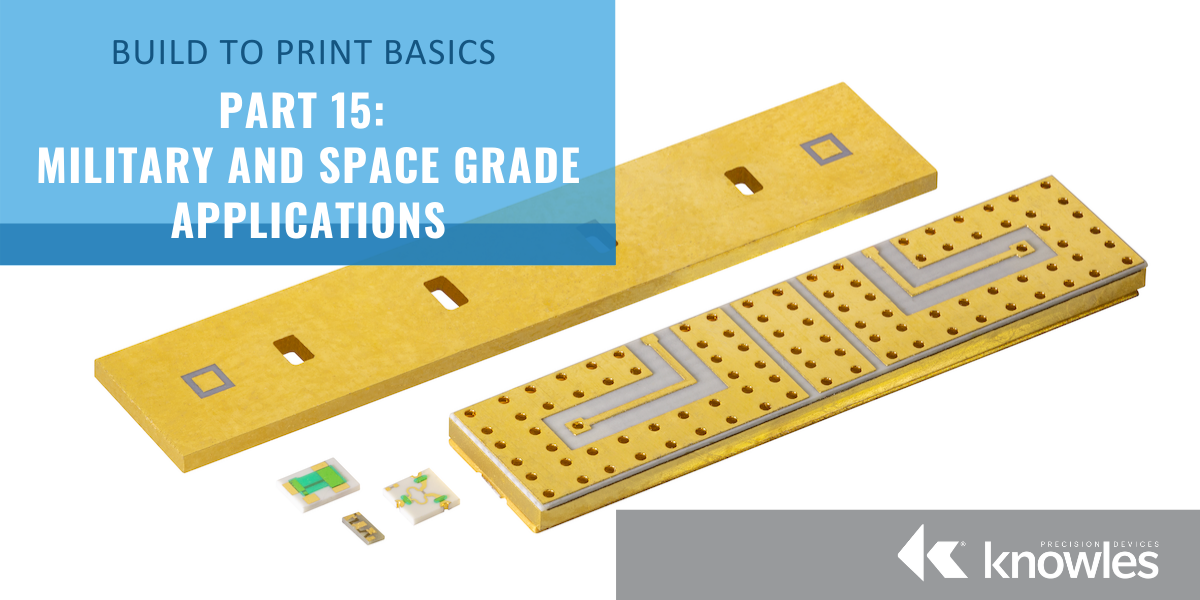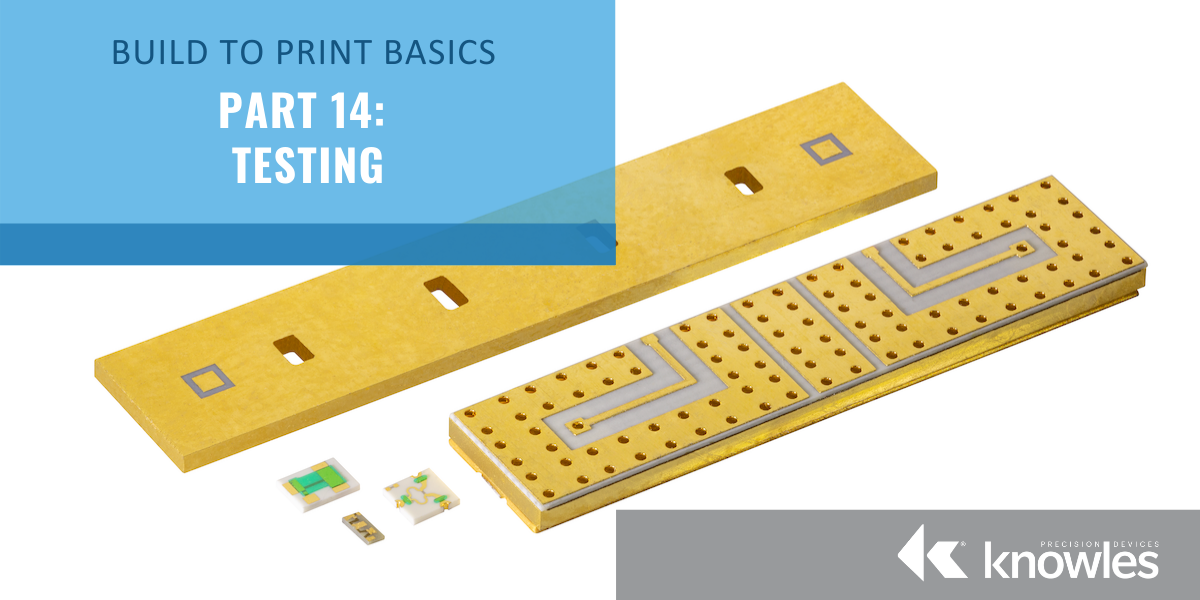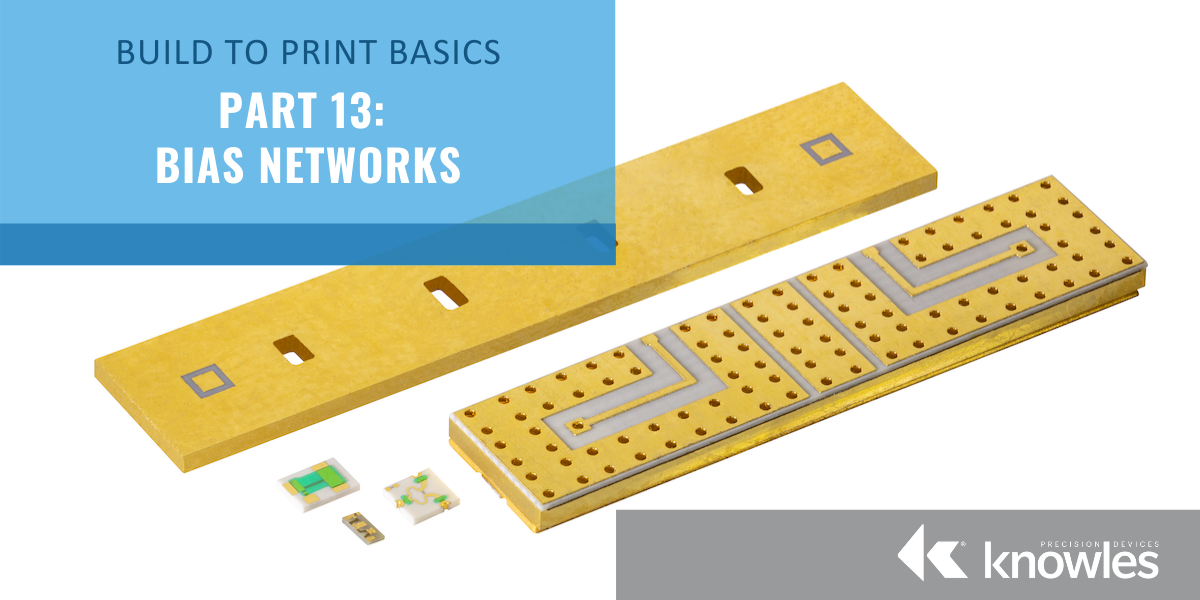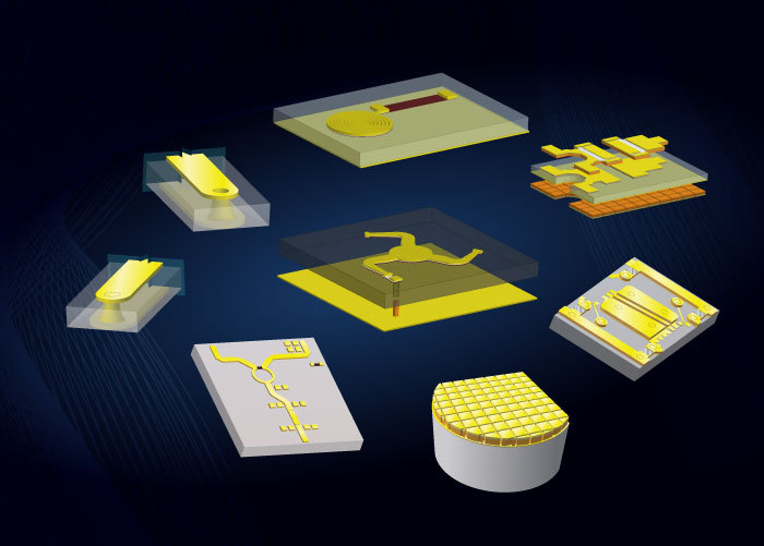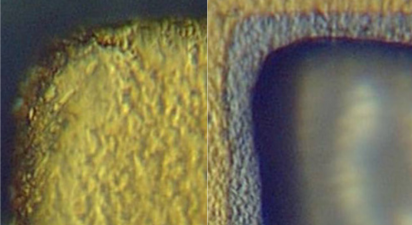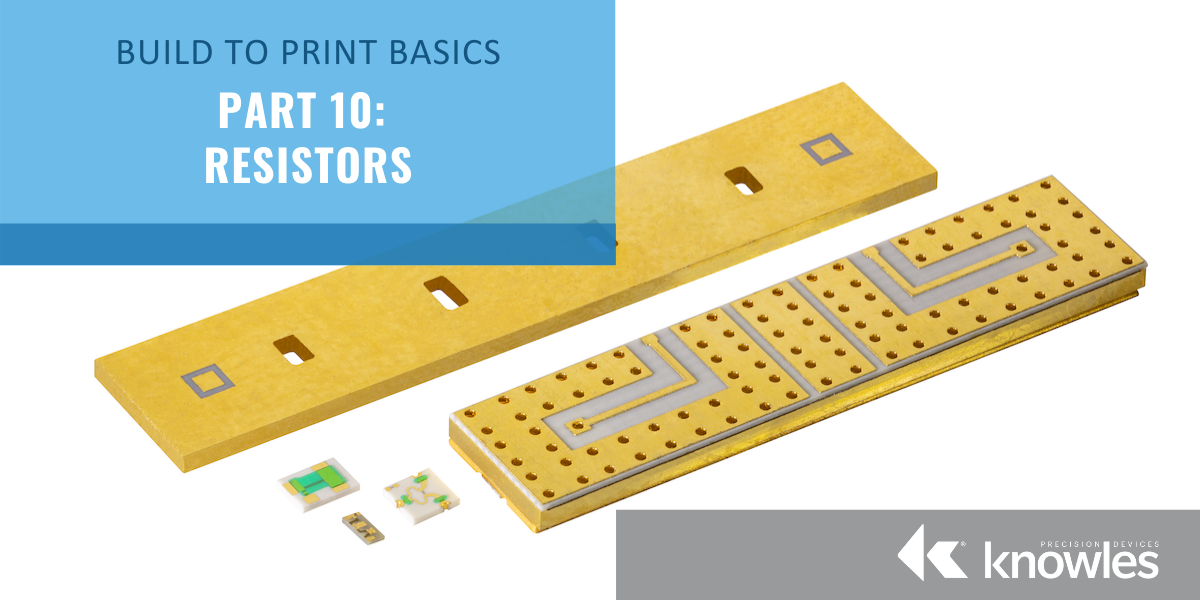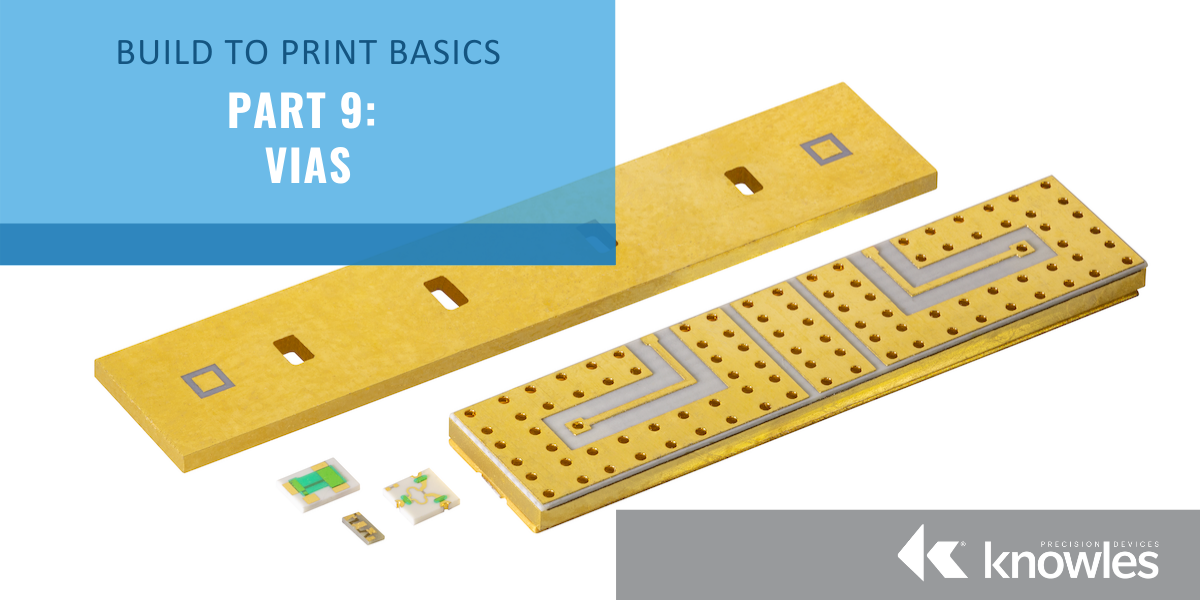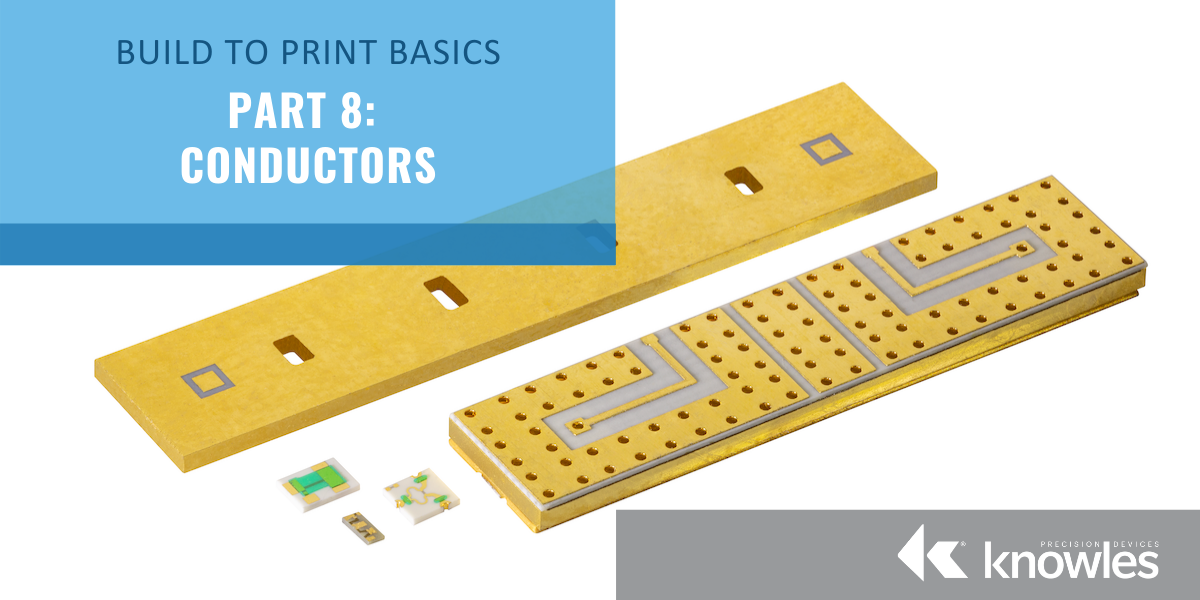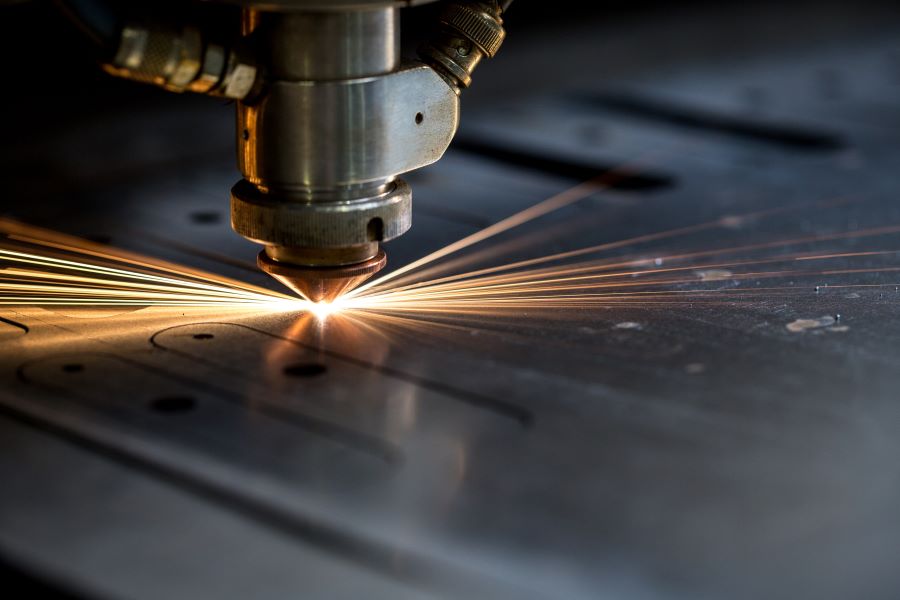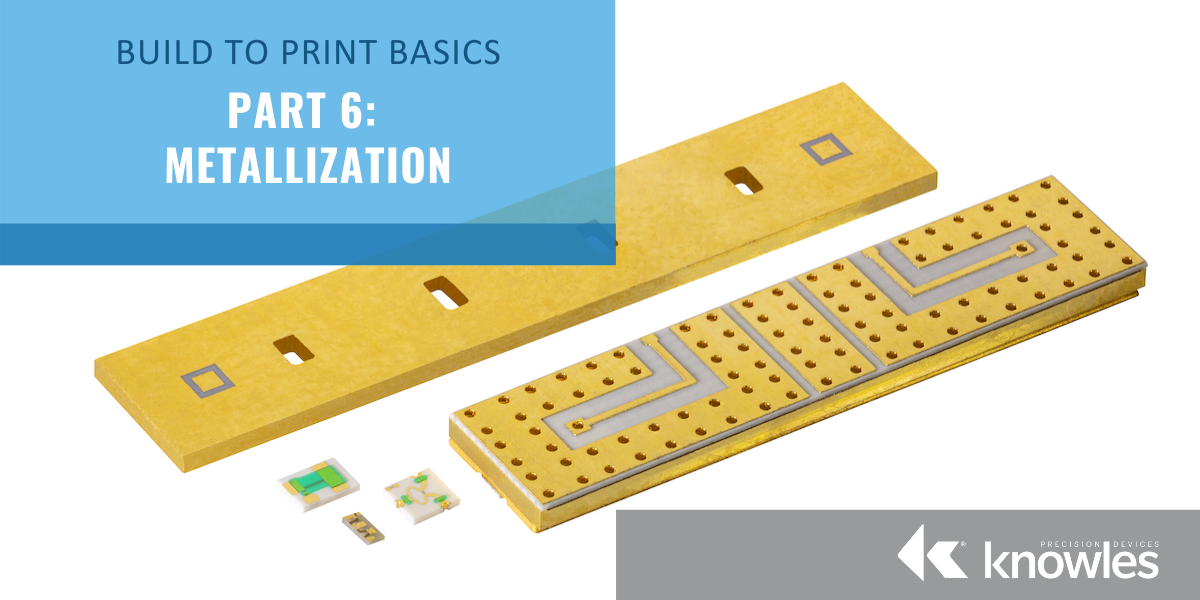To provide a better understanding of build-to-print in general and the breadth of our offerings, as well as how our thin-film technology can benefit your applications, we’ve put together a Build-to-Print Basics series. In this final post of our Build-to-Print Basics series, we discuss the quality standards we follow to ensure our components are qualified for military and space grade applications as well as the additional testing or spec design we can perform as needed by our customers.
Tim Bice

Recent Posts
Build-to-Print Basics Part 15: Military and Space Grade Applications
Topics: Military and Aerospace, Build to Print
To provide a better understanding of build-to-print in general and the breadth of our offerings, as well as how our thin-film technology can benefit your applications, we’ve put together a Build-to-Print Basics series. In part 14 we discuss a range of non-standard testing services our facilities can provide when needed by our build-to-print customers.
Topics: Build to Print
To provide a better understanding of build-to-print in general and the breadth of our offerings, as well as how our thin-film technology can benefit your applications, we’ve put together a Build-to-Print Basics series. In part 13 we provide an overview of how we use our build-to-print process and thin-film expertise to develop bias networks that support the functionality of active microwave components while also minimizing the space needed in a circuit for certain components and simplifying circuit assembly.
Topics: Build to Print
Build-to-Print Basics Part 12: Custom Microwave Components
To provide a better understanding of build-to-print in general and the breadth of our offerings, as well as how our thin-film technology can benefit your applications, we’ve put together a Build-to-Print Basics series. In part 12, we tie everything we’ve discussed so far together and provide more specifics about how we use the processes and options detailed throughout this series to create the custom microwave components you need.
Topics: RF and Microwave, Build to Print
Build-to-Print Basics Part 11: Ensuring Reliable Connections with Supported Bridges and Solder Dams
To provide a better understanding of build-to-print in general and the breadth of our offerings, as well as how our thin-film technology can benefit your applications, we’ve put together a Build-to-Print Basics series. Part 11 covers how we work with solder, solder masks, and supported bridges in the thin-film components we design and develop.
You can have a beautifully designed circuit, but if you can’t reliably connect the various components within the circuit, your beautiful design is negated. Let’s look at some of the materials and techniques Knowles Precision Devices uses for soldering and bridging, and how we handle these techniques as circuit complexity increases.
Topics: Build to Print
To provide a better understanding of build-to-print in general and the breadth of our offerings, as well as how our thin-film technology can benefit your applications, we’ve put together a Build-to-Print Basics series. Part 10 covers our key design parameters for resistors as well as our standard layouts.
Topics: Build to Print
To provide a better understanding of build-to-print in general and the breadth of our offerings, as well as how our thin-film technology can benefit your applications, we’ve put together a Build-to-Print Basics series. Part 9 covers the various strategies that can be used for adding vias into circuits.
Topics: Build to Print
To provide a better understanding of build-to-print in general and the breadth of our offerings, as well as how our thin-film technology can benefit your applications, we’ve put together a Build-to-Print Basics series. Part 8 provides basic and multilayer conductor guidelines as well as information on fine line conductor features.
Topics: Build to Print
To provide a better understanding of build-to-print in general and the breadth of our offerings, as well as how our thin-film technology can benefit your applications, we’ve put together a Build-to-Print Basics series. Part 7 covers how we use in-house laser machining, laser trimming, and other laser cutting techniques to build high-precision thin-film components.
Topics: Build to Print
To provide a better understanding of build-to-print in general and the breadth of our offerings, as well as how our thin-film technology can benefit your applications, we’ve put together a Build-to-Print Basics series. Part 6 covers the various aspects of metallization that we consider to determine the best fit for our customer’s build-to-print applications.
Topics: RF and Microwave

